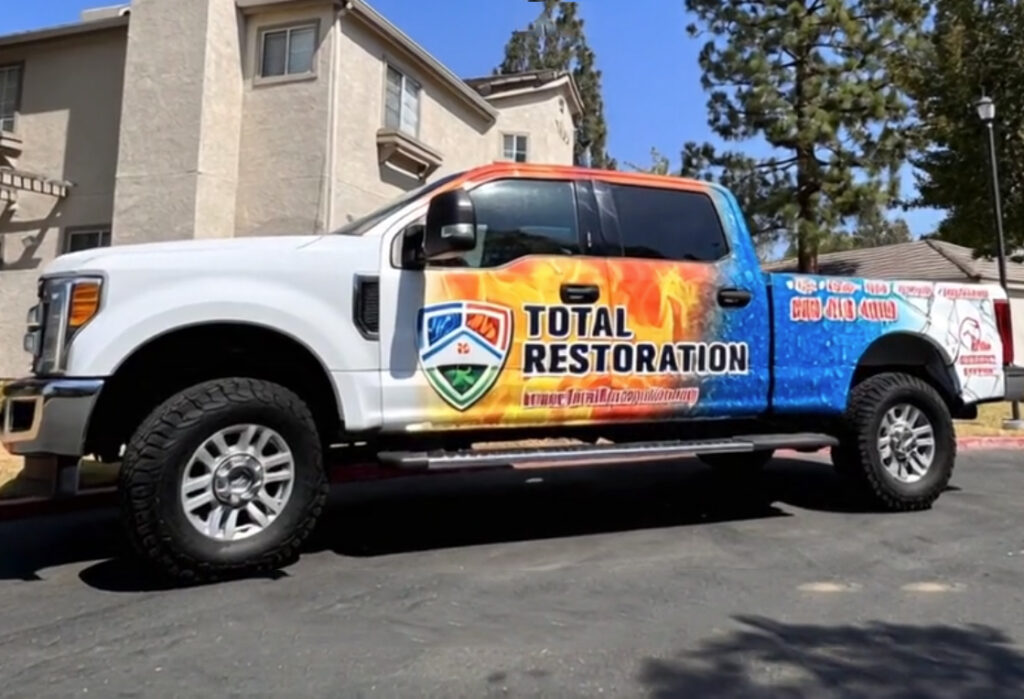Thousand Oaks is famous for its oak groves, hiking paths, and upscale neighborhoods. But when asbestos problems occur, like disturbed insulation, broken tiles, or pipe coverings in home updates, the routine gets interrupted right away. These are serious cases with potential long-term health effects, needing EPA-certified workers, safety equipment, and proper removal rules.
That’s why homeowners, property managers, and business owners contact Total Restoration.
Because you don’t just need extraction. You need risks removed and assurance in a safe building restored.
Thousand Oaks buildings run into asbestos in particular situations:
Each of these brings major health concerns, from asbestosis, lung cancer, mesothelioma, and fiber breathing. Without fast professional containment, particles get into air systems and wall voids.

No. Everyday cleaners only push fibers around. They don’t capture tiny particles deep in materials or in the airflow.
Fiber releases, renovation exposures, demolition waste, and old installations need certified teams. These dangers move fast if not sealed off. Professionals use EPA methods, full protective clothing, and lab-tested sealants to bring back safety and meet building codes at the property.
Often yes, especially for sudden exposures. Companies might try to reduce the claim. That’s why professional reports, with pictures, step-by-step logs, and air samples, are key. Good documentation makes it tough for them to deny and covers the whole removal bill.
No. Home efforts rarely get all fibers out and usually spread them more. Without heavy-duty vacuums, breathing masks, and sealed work areas, residues stick around. Expert crews remove hazards step by step and test to confirm the air is clear.
Problems include insulation wraps, joint compounds, vinyl tiles, roofing cement, and any damaged types that give off fibers. Even small amounts can carry cancer risks. They have to be taken out and handled through approved waste systems.
It depends on the scale. A small spot might wrap up in half a day, but big attic projects can go a few days with encapsulation or air checks. Testing at the end makes sure the building is safe before it’s cleared.
Workers use PPE: full-body suits, glove covers, N95 masks, and goggles. They add things like powered air-purifying respirators or extra layers for high-fiber jobs. This keeps fibers from being breathed in and stops them from leaving the work zone.
EPA guidelines cover every part. They include worker training, containment setups, particle tracking, and licensed waste removal. Sticking to these keeps everyone safe and gets the building back to full legal standards.

The blend of hillside neighborhoods, expanding suburbs, and aging mid-century homes creates conditions that heighten the risk of asbestos exposure across residential and commercial spaces. Its dry climate, uneven terrain, and mixed construction eras make fiber control more challenging than in flatter or newer developments.
These combined environmental and architectural factors cause asbestos contamination in Thousand Oaks to build faster, reach deeper structural layers, and require more precise containment and removal. Professional abatement, certified testing, and verified air clearance are essential to protect residents and maintain long-term property safety.
Our certified Thousand Oaks response team arrives within 90 minutes, initiating containment immediately. Rapid deployment prevents airborne fibers from spreading and limits additional property damage.
Heavy-duty plastic barriers with zipper access points are installed to isolate the affected zones. Negative pressure units maintain safe airflow direction, while industrial HEPA filters capture airborne asbestos particles down to 0.3 microns, ensuring surrounding areas stay clean.
We apply EPA-registered sealants that lock in residual fibers and stabilize surfaces. Continuous air sampling confirms safe levels of air quality and verifies compliance with hospital-grade containment and safety standards.
Infrared imaging technology identifies hidden contamination and moisture behind drywall, ceilings, and subfloors. High-capacity fans and extractors dry affected areas, followed by deep cleaning and sealing of reusable wood beams and framing components.
Damaged drywall, flooring, and insulation padding are carefully extracted under full containment. All waste is double-bagged, labeled, and transported under regulated disposal guidelines. Remaining structures are treated with antimicrobial and fiber-lock coatings to prevent recurrence.
Every step of the process is recorded, including fiber and moisture logs, pre- and post-test air results, and complete photographic and video documentation. Full chain-of-custody disposal records support insurance compliance and reimbursement.
One certified team manages every phase—from initial containment barriers to the final finishing coat—providing Thousand Oaks homeowners with a seamless, verified, and fully documented restoration experience.

Persistent dry winds circulate asbestos fibers throughout attics, crawl spaces, and ventilation systems, extending cleanup time. Fine dust from routine yard work or hillside erosion wears down duct seals, triggering repeated fiber releases across homes and garages.
Structural Risks
Mid-century houses with popcorn ceilings, vinyl sheet flooring, and linoleum backing hold fibers tightly within layered adhesives and plaster. Without precise cutouts, controlled drying, and proper sealing, asbestos can reemerge even after partial removal.
Our Method Addresses These Issues:
These improvements reduce the risk of re-exposure, extend building lifespan, and help Thousand Oaks homeowners protect both health and long-term property value.
Do not touch, sweep, or move any affected materials such as ceiling tiles, insulation, or old flooring. Any disturbance releases more microscopic fibers that can remain airborne for hours and spread throughout your home.
Following these steps reduces health risks, maintains insurance eligibility, and allows our crew to start the remediation process safely, efficiently, and with full documentation.

Most removal companies hand you a bill and tell you to “call your insurer.” That approach leaves homeowners stranded when it matters most. At Total Restoration, we handle insurance documentation with the same precision, care, and urgency as the asbestos removal itself. We make sure your claim is supported by undeniable proof from start to finish.
Here’s how we support Thousand Oaks property owners:
We do far more than help with claims. We create airtight documentation packages that compel insurers to approve full reimbursement and prevent underpayment. Thousand Oaks clients gain more than clean air, they gain a trusted advocate who stands up for their rights and ensures every dollar of coverage is honored.
We bring the workers, the gear, and the records to get safety back and coverage approved. Even better, we bring respect and care to families and businesses dealing with stressful situations.
Don’t put your loved ones’ lungs or your home’s worth at stake. Call (805) 410-4999 now. We get there in under 90 minutes, lock down the site, and push hard if insurers slow things down. Total Restoration is more than removal, it’s your guarantee of abatement handled right.